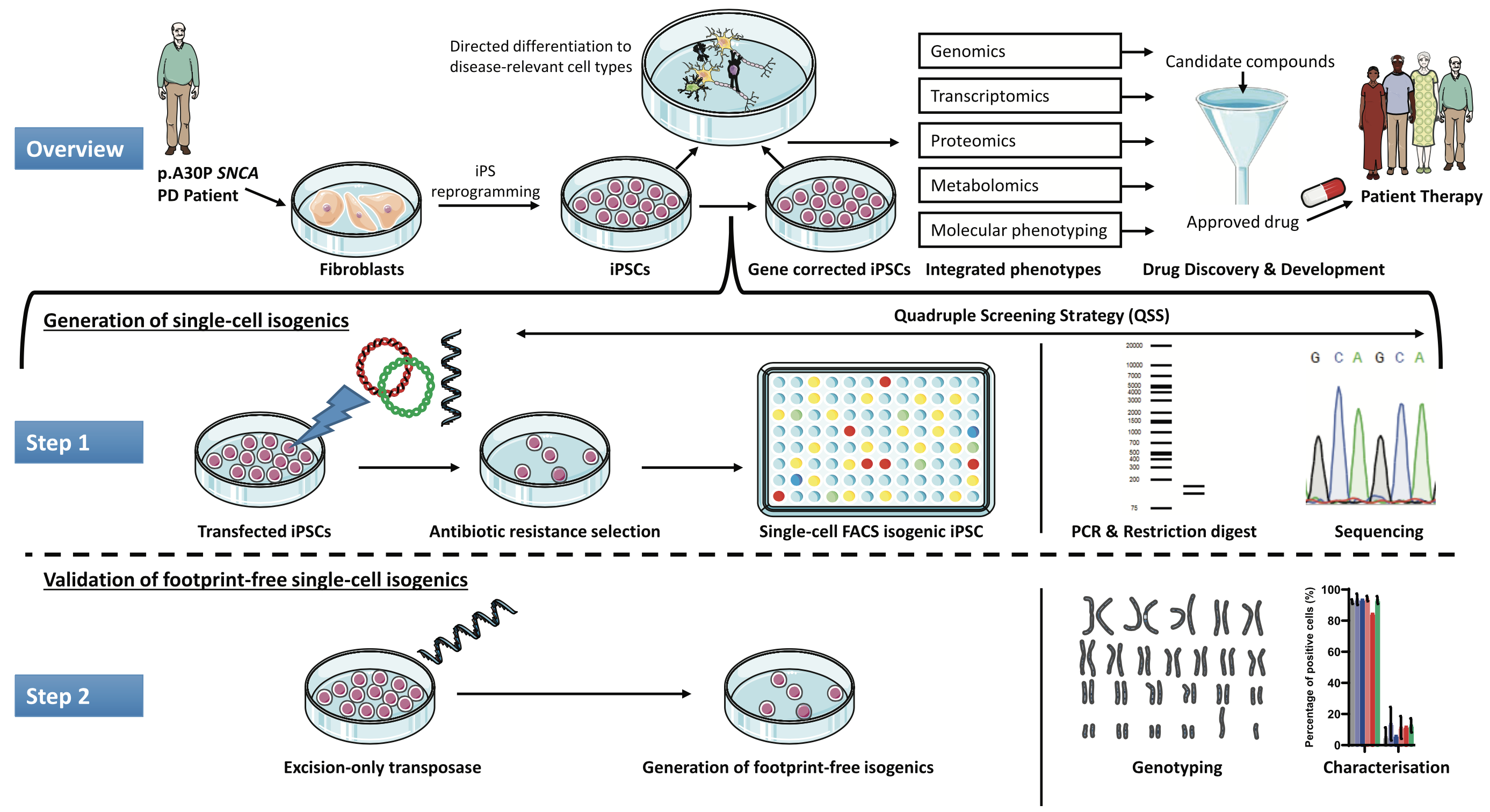Using High-Content Screening to Generate Single-Cell Gene-Corrected Patient-Derived iPS Clones Reveals Excess Alpha-Synuclein with Familial Parkinson’s Disease Point Mutation A30P#
Authors#
Peter A. Barbuti, Paul M. Antony, Bruno FR. Santos, François Massart, Gérald Cruciani, Claire M. Dording, Jonathan Arias, Jens C. Schwamborn, Rejko Krüger
Abstract#
The generation of isogenic induced pluripotent stem cell (iPSC) lines using CRISPR-Cas9 technology is a technically challenging, time-consuming process with variable efficiency. Here we use fluorescence-activated cell sorting (FACS) to sort biallelic CRISPR-Cas9 edited single-cell iPSC clones into high-throughput 96-well microtiter plates. We used high-content screening (HCS) technology and generated an in-house developed algorithm to select the correctly edited isogenic clones for continued expansion and validation. In our model we have gene-corrected the iPSCs of a Parkinson’s disease (PD) patient carrying the autosomal dominantly inherited heterozygous c.88G>C mutation in the SNCA gene, which leads to the pathogenic p.A30P form of the alpha-synuclein protein. Undertaking a PCR restriction-digest mediated clonal selection strategy prior to sequencing, we were able to post-sort validate each isogenic clone using a quadruple screening strategy prior to generating footprint-free isogenic iPSC lines, retaining a normal molecular karyotype, pluripotency and three germ-layer differentiation potential. Directed differentiation into midbrain dopaminergic neurons revealed that SNCA expression is reduced in the gene-corrected clones, which was validated by a reduction at the alpha-synuclein protein level. The generation of single-cell isogenic clones facilitates new insights in the role of alpha-synuclein in PD and furthermore is applicable across patient-derived disease models.
Graphical abstract#

Raw data#
The complete dataset is available LCSB File Storage.
Source code#
The source code used to make the analysis/figures of the publication is available on GitLab.